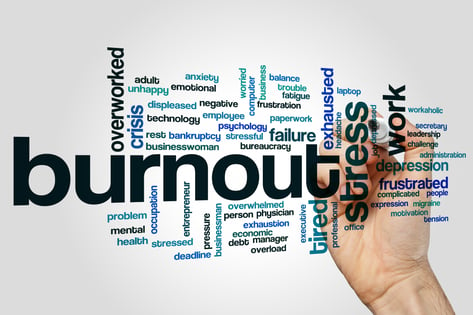Addressing Caregiver Burnout in the Aging Services Workforce


Caregivers are the backbone of the long term care industry and this workforce is facing serious challenges. While better pay and benefits will help recruit and retain staff, employers need to understand and address the day-to-day challenges and stresses that caregivers face in providing care for aging adults and persons living with disabilities.
Anyone working in aging services is a caregiver of some kind. Caregivers manage elders' physical, emotional, spiritual, and practical needs while managing their own lives, needs, families and careers.
Many professional caregivers are drawn to working with others because they have the heart for it. They often have a natural gift of caring, compassion and serving others. These traits are highly sought after from aging services providers whose mission is to improve the quality of life and quality of care for their residents or clients.
Choosing to serve elders can be a rewarding career in many ways. At the same time, it is hard work, and can be physically demanding and emotionally draining. Far too often, caregivers leave employers simply because they cannot cope with the stresses of the job. Sometimes, they will seek out another aging service provider, but sadly, too often they leave the field of aging services altogether. To see good caregivers leave due to burnout is a tragedy and one we can do something about - we can address the problem and help caregivers avoid serious burnout. Practicing coping skills to avoid burnout is critical.
Burnout is experienced in varying degrees and is made up of:
- Emotional exhaustion that leads to decreased coping reserves
- Feeling detached from the people in your care and having a lack of compassion
- A negative attitude toward one's work, affecting performance
Burnout can lead to detachment from co-workers, friends, and family. It chips away at the motivation and interest that led one to serve elders in the first place. Burnout saps energy, and can cause cynical and resentful feelings. If left unchecked, one may feel like they have nothing more to give. The effects of burnout creep into every area of life.
Burned-out caregivers feel overloaded with the demands of employers, families and friends.
The following are workplace causes that may perpetuate staff burnout:
- Care staff feeling little control over how they do their work
- Poorly defined job expectations
- A lack of recognition or reward for good work
- Inadequate staff to share the load
- High staff turnover
- Scheduling long shifts or overtime
- Being called in when staffing is short
- Change of company owner or leadership
- Lack of training and resources, leading to feeling unprepared with workers and having low confidence in skills
Caregivers are especially vulnerable to burnout not only due to their workload, but also due tothe nature of the work they provide being highly emotional. They deal with loss of elders they've grown attached to, illness and disabilities require special skills and patience in learning to respond to stress reactions. Growing numbers of persons in aging services have some level of dementia, making caregiving especially complex. Caregivers must also console families and friends who are often confused, angry and also dealing with loss and grief.
Caregiver burnout is real and growing in the care workforce. Addressing burnout includes:
- Recognizing warning signs of burnout
- Preventing or minimizing the impact of burnout
- Learning tools to build resilience to stress
Just a quality of life and well-being of residents is a top priority for any aging service provider. The same priority should be given to the care staff. The saying 'you can't give something you don't have' most certainly applies to those who serve elders in any capacity. When the well is dry, there is nothing to give, and everyone suffers.
From caregiver burnout to well-being is possible. Because burnout effects one's emotional, mental, behavioral, and physical wellness, a multi-tiered approach to help prevent, cope and recover from burnout should be addressed as ongoing educational support for care staff. Practicing self-care and understanding the warning signs and being able to properly address signs of burnout is highly important to maintaining a healthy and satisfied workforce.
Find out how your organization can provide effective and easy- to- deliver Caregiver Burnout employee training, education and support tools here.
Pam Brandon is the CEO and Founder of AGE-u-cate Training Institute, a global organization whose mission is to deliver evidence-informed, high-impact caregiver education and meaningful life enrichment programs, improving the quality of life for older adults.


